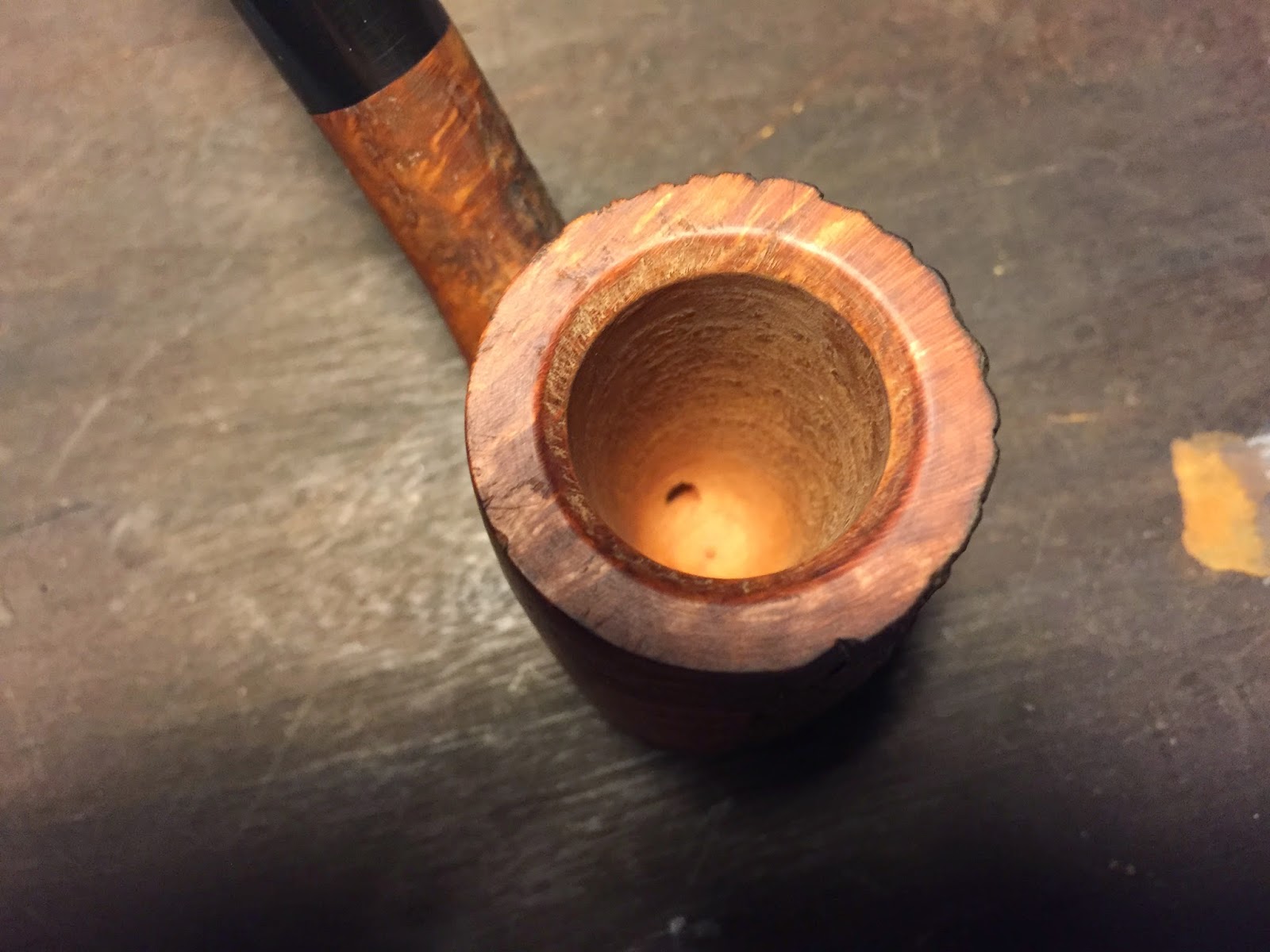This blog entry's content, format, language, and font is optimised for old eyes, like those over 45 years of age.
I am totally sold out on any writing on woodworking. Too busy, too tired.
Took up smoking pipes. Hard to get real tobaccos here. The sundry stores stock aromatics mostly, in the likes of Captain Black, Borkum Riff, Dutch masters, etc. The closest I've come to real tobacco is Erinmore Flake.
Anyway, from Greece, an ebay seller offered a kit that will eventually finish as a bent Billiard. Kits like these are supplied with the heavy lifting done (chamber, draft holes, tenons, heat bending, etc) so that on can focus on the design, not construction. See below:
I have other plans. I've always been partial to Cherry Wood (the name of the pipe shape, not the material Cherry) and Pokers.
So much so that I cannot resist bidding on a real cherry wood pipe by Ropp (France). Bark intact, mind you. Panelled too.
Rustic Beauty. And so I decided to be rustic. Rather than polishing the Briar smooth and boring shiny. Don't have a muslin wheel, can't find Carnauba wax either.
I started with a sharp Morakniv No.2.
Two bleeding cuts on my bloody fingers and 3 hours later:
The somewhat "Pine Bark" side:
The smooth side, just in case someday, while smoking, I may wonder what's the original grain like.
It was not something to shout about, nor will it win any award, but hey...not too bad for my first rustication. The Brown is achieved by lightly brushing on black shoe polish.
The smooth side, I rubbed my nose on it. Decent $30 grain, save for the sporadic pin pricks and stray knife marks.
The fake classic shot.
Up next...some serioux free hand plateaux.
Regards from Lion city.
















Comments
Post a Comment